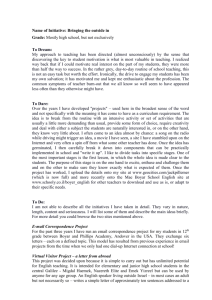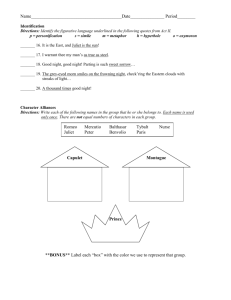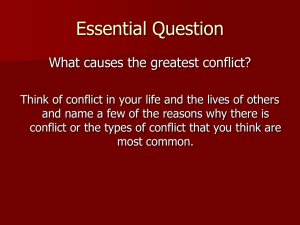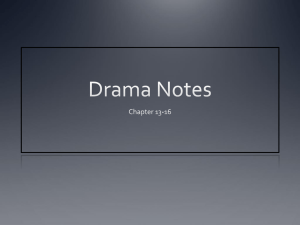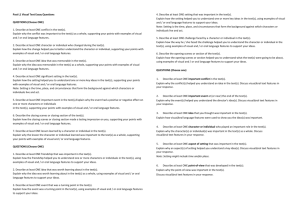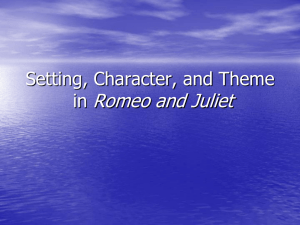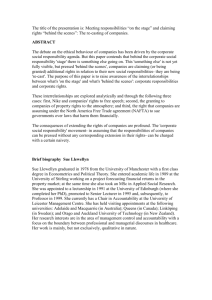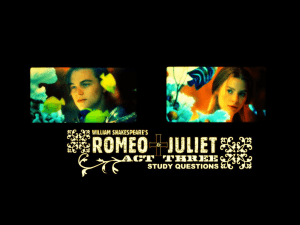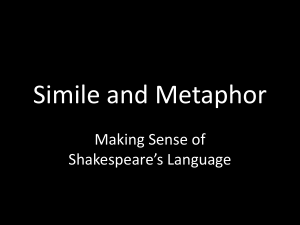Romeo and Juliet LAP 3
advertisement
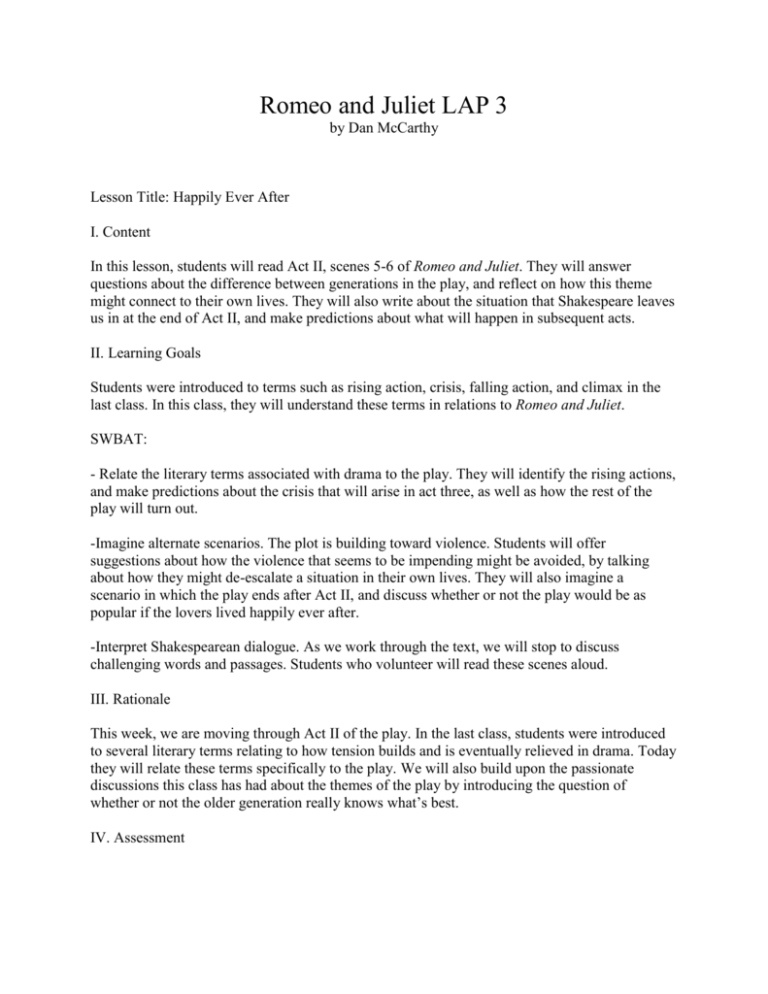
Romeo and Juliet LAP 3 by Dan McCarthy Lesson Title: Happily Ever After I. Content In this lesson, students will read Act II, scenes 5-6 of Romeo and Juliet. They will answer questions about the difference between generations in the play, and reflect on how this theme might connect to their own lives. They will also write about the situation that Shakespeare leaves us in at the end of Act II, and make predictions about what will happen in subsequent acts. II. Learning Goals Students were introduced to terms such as rising action, crisis, falling action, and climax in the last class. In this class, they will understand these terms in relations to Romeo and Juliet. SWBAT: - Relate the literary terms associated with drama to the play. They will identify the rising actions, and make predictions about the crisis that will arise in act three, as well as how the rest of the play will turn out. -Imagine alternate scenarios. The plot is building toward violence. Students will offer suggestions about how the violence that seems to be impending might be avoided, by talking about how they might de-escalate a situation in their own lives. They will also imagine a scenario in which the play ends after Act II, and discuss whether or not the play would be as popular if the lovers lived happily ever after. -Interpret Shakespearean dialogue. As we work through the text, we will stop to discuss challenging words and passages. Students who volunteer will read these scenes aloud. III. Rationale This week, we are moving through Act II of the play. In the last class, students were introduced to several literary terms relating to how tension builds and is eventually relieved in drama. Today they will relate these terms specifically to the play. We will also build upon the passionate discussions this class has had about the themes of the play by introducing the question of whether or not the older generation really knows what’s best. IV. Assessment Students will hand in homework relating to how they might de-escalate a situation that is headed toward violence. They will answer questions before and after we read the two scenes about the difference between generations, and the building tension of the play. V. Personalization and Equity As we read the scenes as a class, we will stop to discuss words and phrases that students are confused by. Today’s questions will be accessible to all learners because if they will be relating themes of the play to their own lives and opinions. VI. Activity Agenda Time 5 minutes 5 minutes 3 minutes 25 minutes 10 minutes Teacher will do Hand out paper and explain bellringer: Is there anything your generation understands that adults do not? Do you think that older generations are wiser than your generation? Discuss bellringer. Collect homework Facilitate class reading of scenes 5 and 6. Explain exit question: What if the play ended here? Would it be as famous? Is there something about the fact that R+J’s love is doomed that makes it sweeter? Students will do Respond to bellringer. Participate in class discussion. Pass in homework. Read scenes 5 and 6 aloud. Respond to exit question. VII. Learning Standards RL.9-10.4 Determine the meaning of words and phrases as they are used in the text, including figurative and connotative meanings; analyze the cumulative impact of specific word choices on meaning and tone (e.g., how the language evokes a sense of time and place; how it sets a formal or informal tone). W.9-10.10 Write routinely over extended time frames (time for research, reflection, and revision) and shorter time frames (a single sitting or a day or two) for a range of tasks, purposes, and audiences. SL.9-10.1 Initiate and participate effectively in a range of collaborative discussions (one-on-one, in groups, and teacher-led) with diverse partners on grades 9-10 topics, texts, and issues, building on others' ideas and expressing their own clearly and persuasively.
